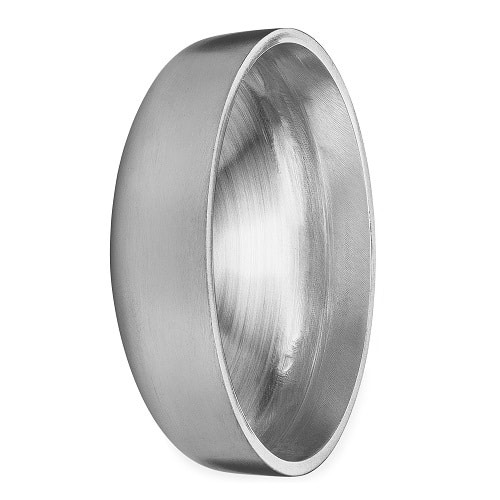-
Cangzhou Yulong Steel Co., Ltd.
-
Phone:
+86 13303177267 -
Email:
admin@ylsteelfittings.com
- English
- Arabic
- Italian
- Spanish
- Portuguese
- German
- kazakh
- Persian
- Greek
- French
- Russian
- Polish
- Thai
- Indonesian
- Vietnamese
- Zulu
- Korean
- Uzbek
- Hindi
- Serbian
- Malay
- Ukrainian
- Gujarati
- Haitian Creole
- hausa
- hawaiian
- Hebrew
- Miao
- Hungarian
- Icelandic
- igbo
- irish
- Japanese
- Javanese
- Kannada
- Khmer
- Rwandese
- Afrikaans
- Albanian
- Amharic
- Armenian
- Azerbaijani
- Basque
- Belarusian
- Bengali
- Bosnian
- Bulgarian
- Catalan
- Cebuano
- China
- China (Taiwan)
- Corsican
- Croatian
- Czech
- Danish
- Esperanto
- Estonian
- Finnish
- Frisian
- Galician
- Georgian
- Kurdish
- Kyrgyz
- Lao
- Latin
- Latvian
- Lithuanian
- Luxembourgish
- Macedonian
- Malgashi
- Malayalam
- Maltese
- Maori
- Marathi
- Mongolian
- Myanmar
- Nepali
- Norwegian
- Norwegian
- Occitan
- Pashto
- Dutch
- Punjabi
- Romanian
- Samoan
- Scottish Gaelic
- Sesotho
- Shona
- Sindhi
- Sinhala
- Slovak
- Slovenian
- Somali
- Sundanese
- Swahili
- Swedish
- Tagalog
- Tajik
- Tamil
- Tatar
- Telugu
- Turkish
- Turkmen
- Urdu
- Uighur
- Welsh
- Bantu
- Yiddish
- Yoruba

Nov . 22, 2024 20:44 Back to list
steel plate flange
Steel Plate Flange An Overview
Steel plate flanges are critical components in various industrial applications, serving as connectors that join two sections of piping, machinery, or equipment. They are typically designed in compliance with industry standards, and their robust construction ensures durability and reliability in even the most demanding environments.
What is a Steel Plate Flange?
A steel plate flange is essentially a flat piece of metal shaped like a disc or ring with holes around the perimeter. These holes allow for bolts to secure the flange to another surface, which can be another flange, a pipe, or a piece of machinery. The primary purpose of a flange is to provide a way to connect different components while maintaining the integrity of the piping or system it supports.
Types of Steel Plate Flanges
There are various types of steel plate flanges, including welding neck, slip-on, blind, and threaded flanges, among others. Each type serves a specific purpose
1. Welding Neck Flanges These flanges feature a long neck that allows for welding directly to the pipe. This design provides a strong joint that can withstand high pressure and reduces the risk of leakage.
2. Slip-On Flanges As the name suggests, these flanges slip over the pipe and are secured with welding. They are easier to align in piping systems but may not be as strong as welding neck flanges.
steel plate flange

3. Blind Flanges These flanges do not have a hole in the center, making them useful for closing off the ends of piping systems. They are essential for maintenance purposes, allowing sections of a pipeline to be isolated.
4. Threaded Flanges Featuring internal threads, these flanges can be screwed onto pipes. They are useful in situations where welding is impractical, although they are typically limited to lower pressure applications.
Material and Manufacturing
Steel plate flanges are commonly made from carbon steel, stainless steel, or alloy steel, depending on the required strength, corrosion resistance, and application. The manufacturing process involves cutting, shaping, and sometimes forging the steel to achieve the desired dimensions and mechanical properties. Advanced techniques like plasma cutting and CNC machining ensure precision and consistency in production.
Applications
Steel plate flanges find applications across a wide range of industries, including oil and gas, chemical processing, power generation, and water treatment. Their ability to create secure and leak-proof joints makes them indispensable in the construction of pipelines, pressure vessels, and machinery.
Conclusion
In conclusion, steel plate flanges are vital components in ensuring the functionality and safety of various industrial systems. Their diverse range of types and materials allows engineers to select the most appropriate flange for specific applications, ensuring optimal performance under varying conditions. As industries continue to evolve, the demand for high-quality steel plate flanges remains crucial, underscoring their importance in modern infrastructure and machinery. As technology advances, so too will the manufacturing processes and designs of these essential components, promising enhanced efficiency and reliability in the field.
Latest news
-
ANSI 150P SS304 SO FLANGE
NewsFeb.14,2025
-
ASTM A333GR6 STEEL PIPE
NewsJan.20,2025
-
ANSI B16.5 WELDING NECK FLANGE
NewsJan.15,2026
-
ANSI B16.5 SLIP-ON FLANGE
NewsApr.19,2024
-
SABS 1123 FLANGE
NewsJan.15,2025
-
DIN86044 PLATE FLANGE
NewsApr.19,2024
-
DIN2527 BLIND FLANGE
NewsApr.12,2024
-
JIS B2311 Butt-Welding Fittings LR/SR 45°/90° /180°Seamless/Weld
NewsApr.23,2024











